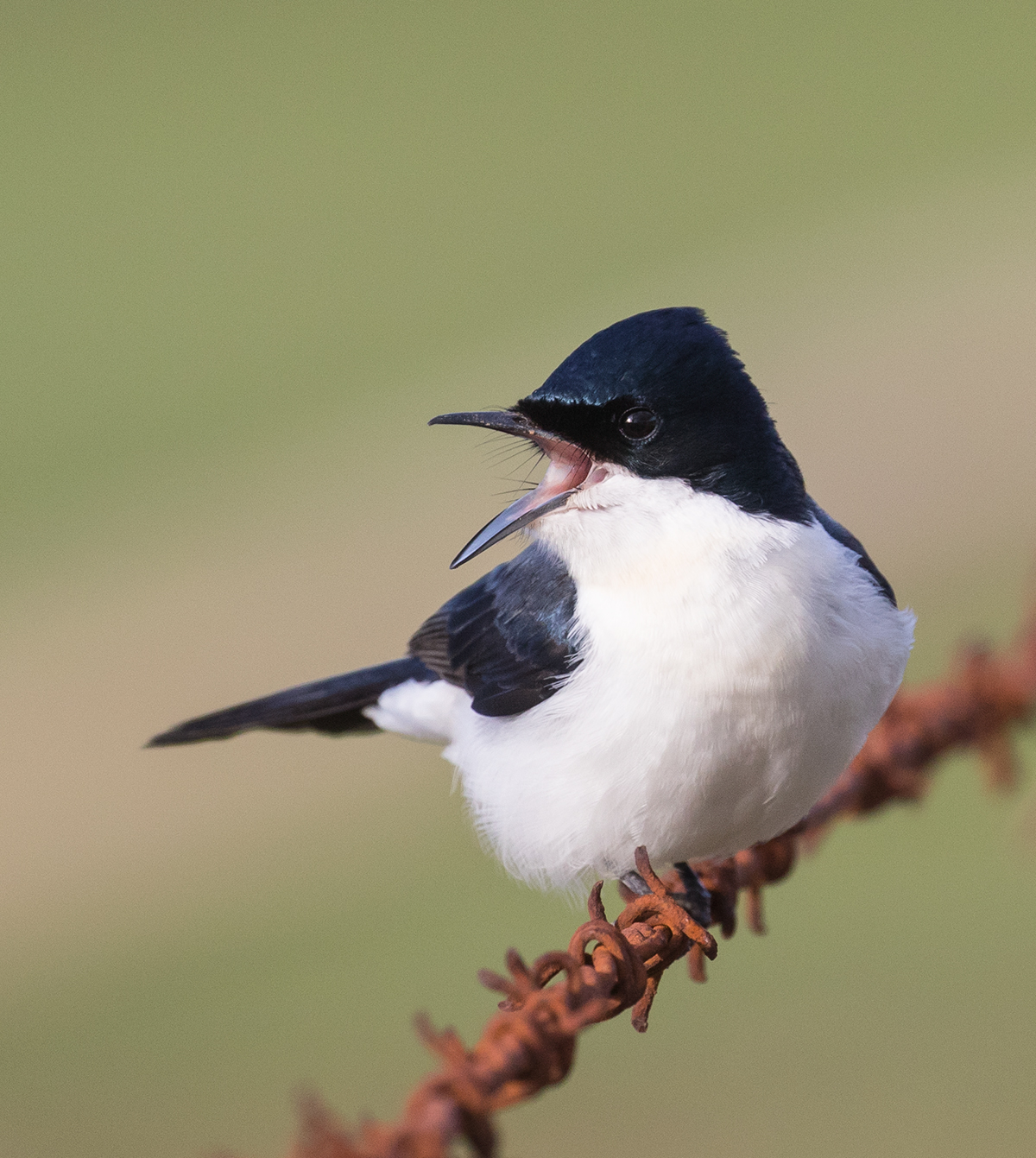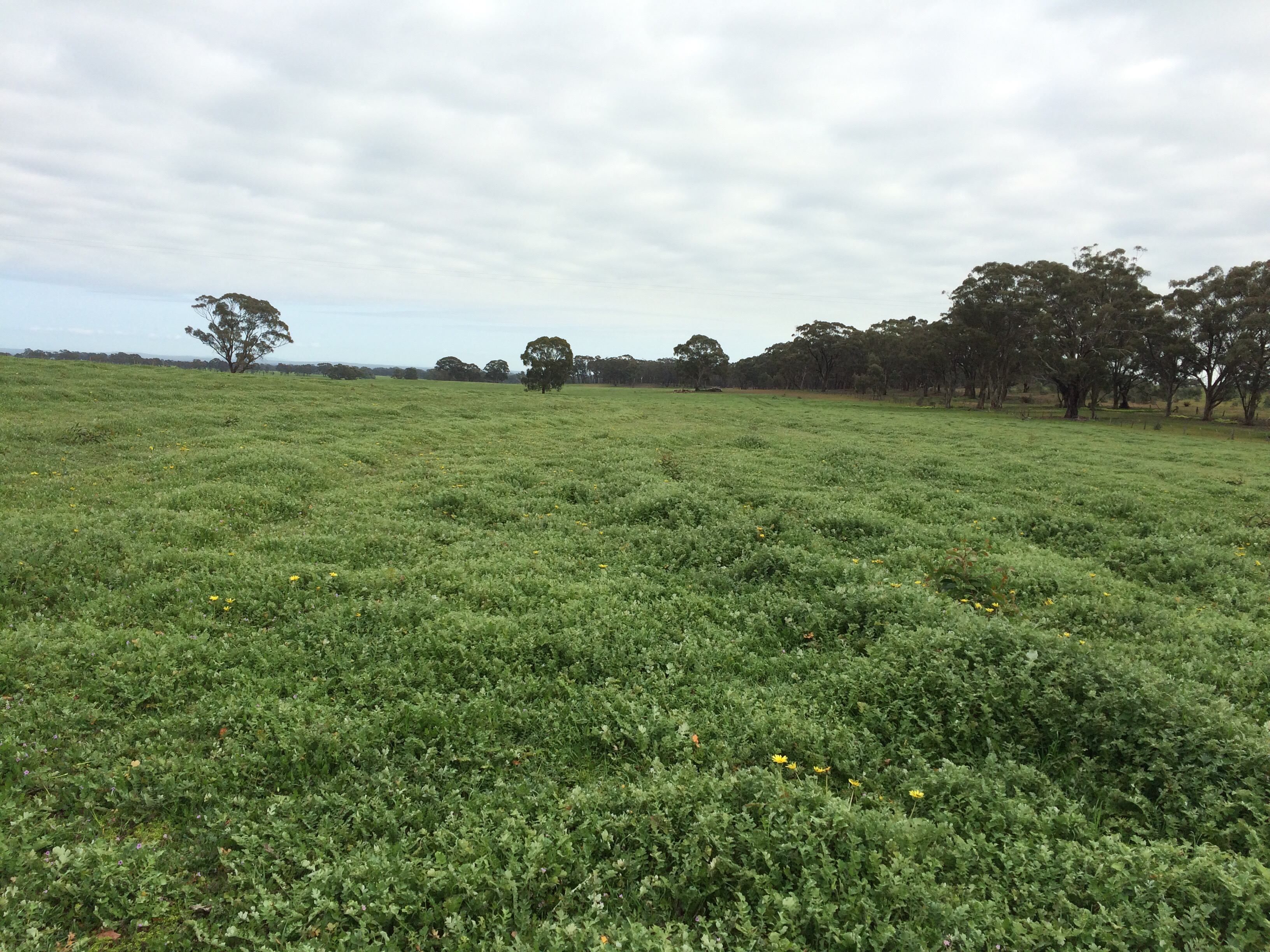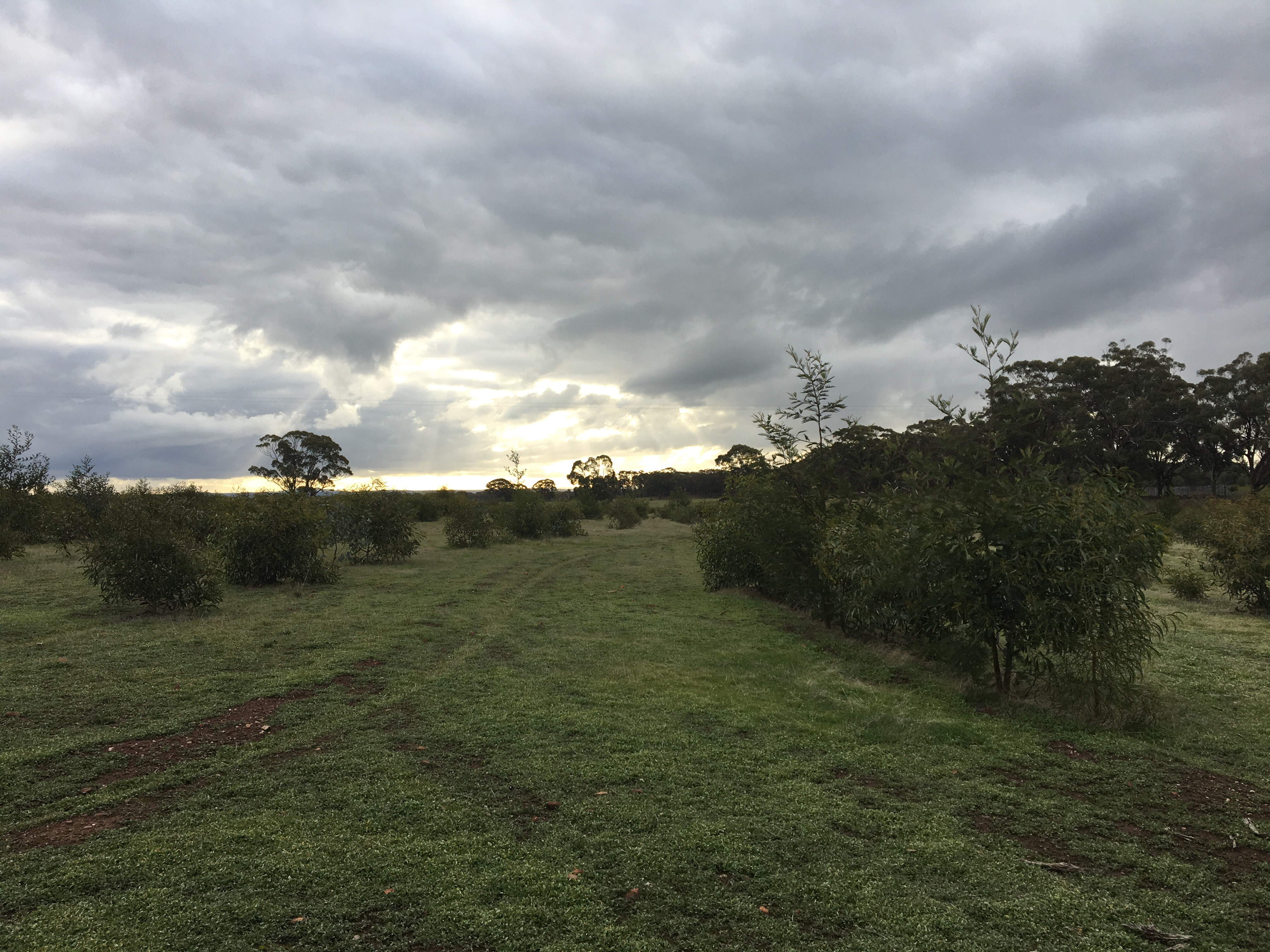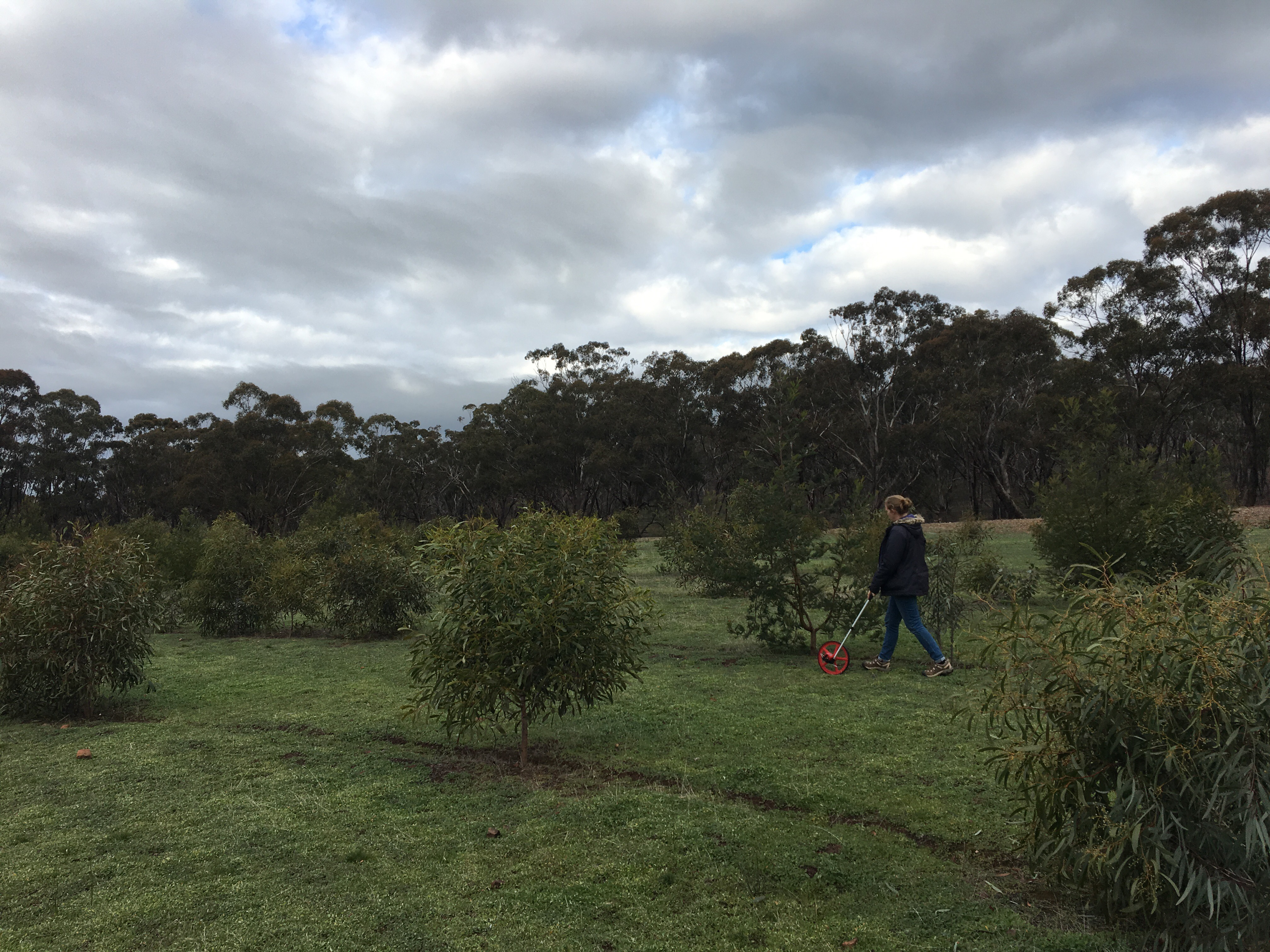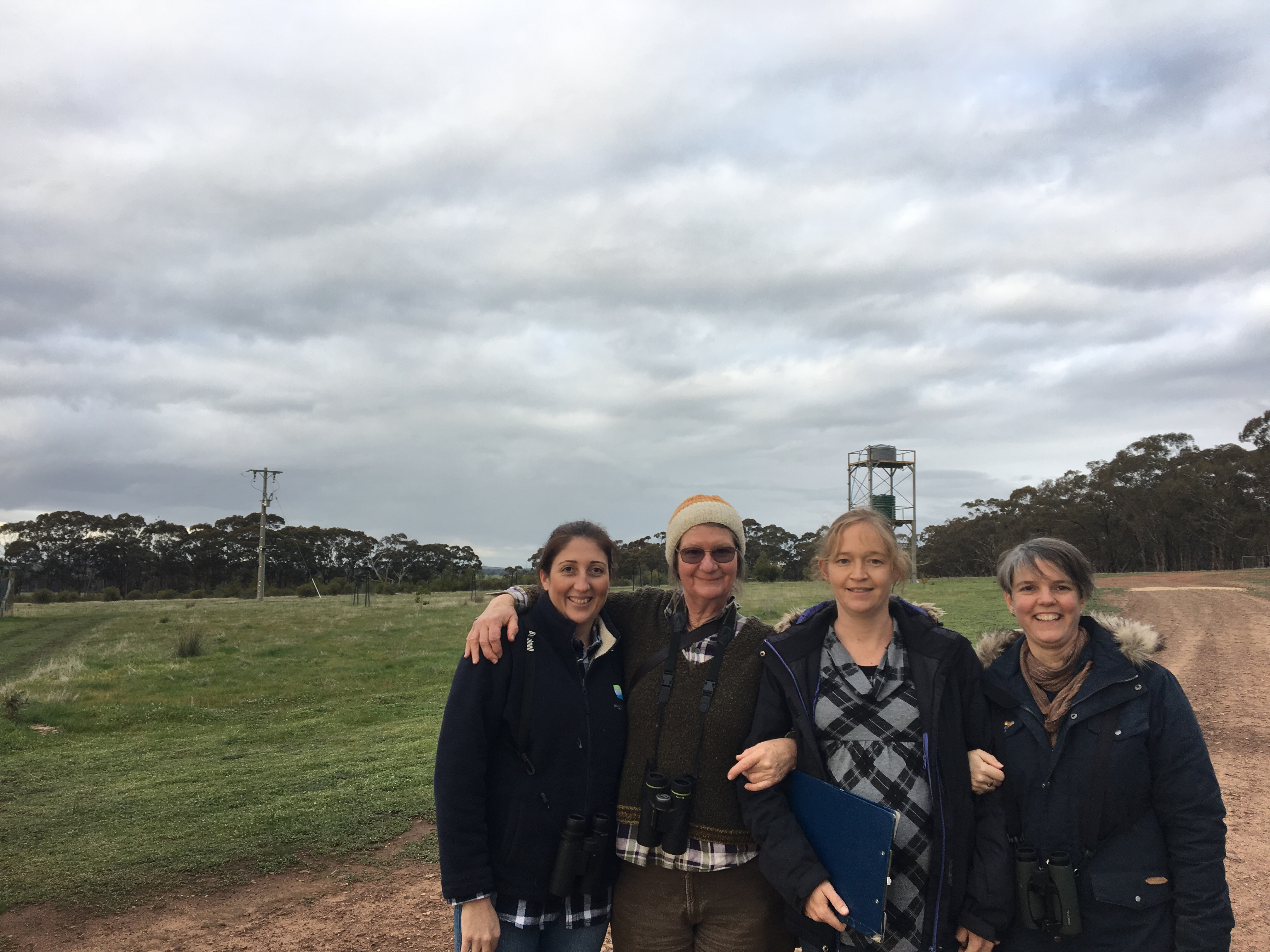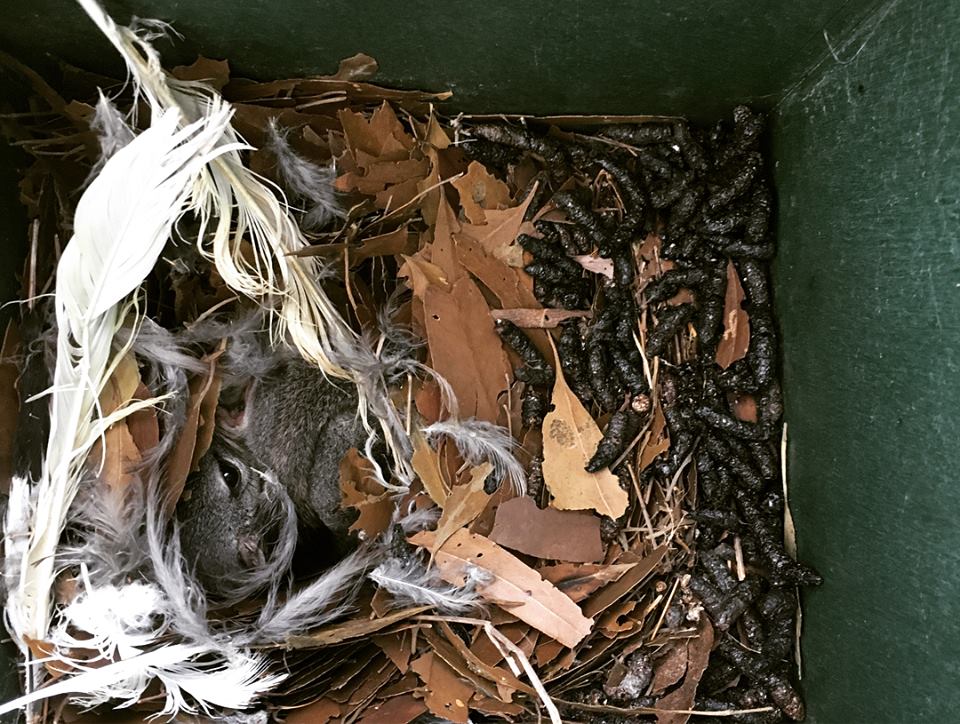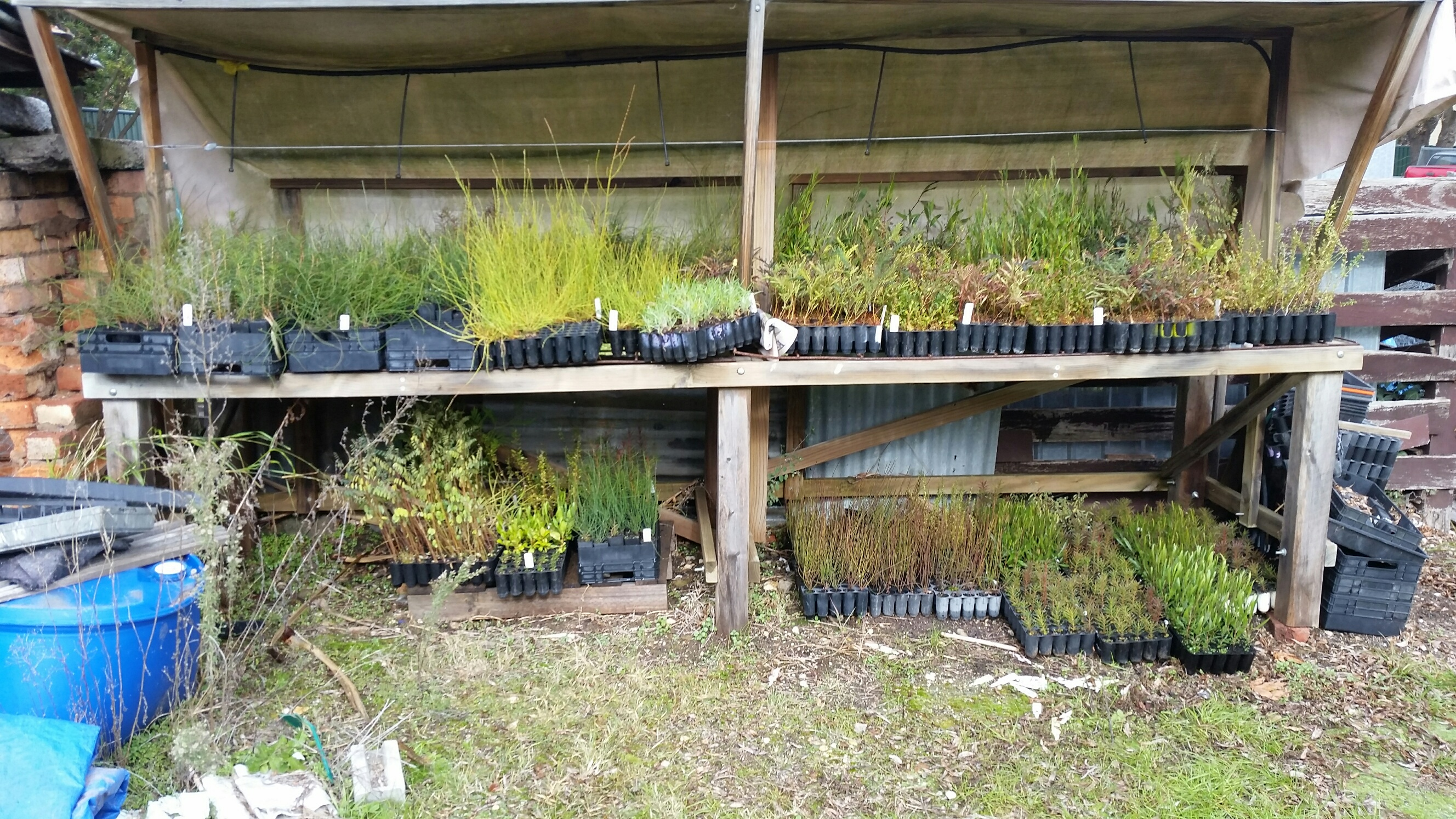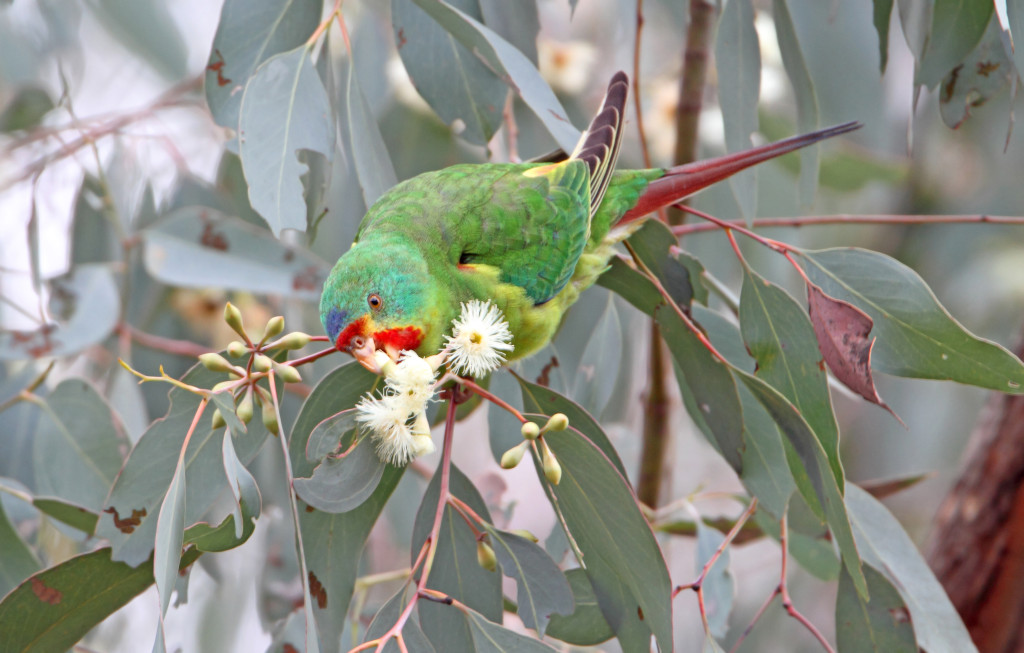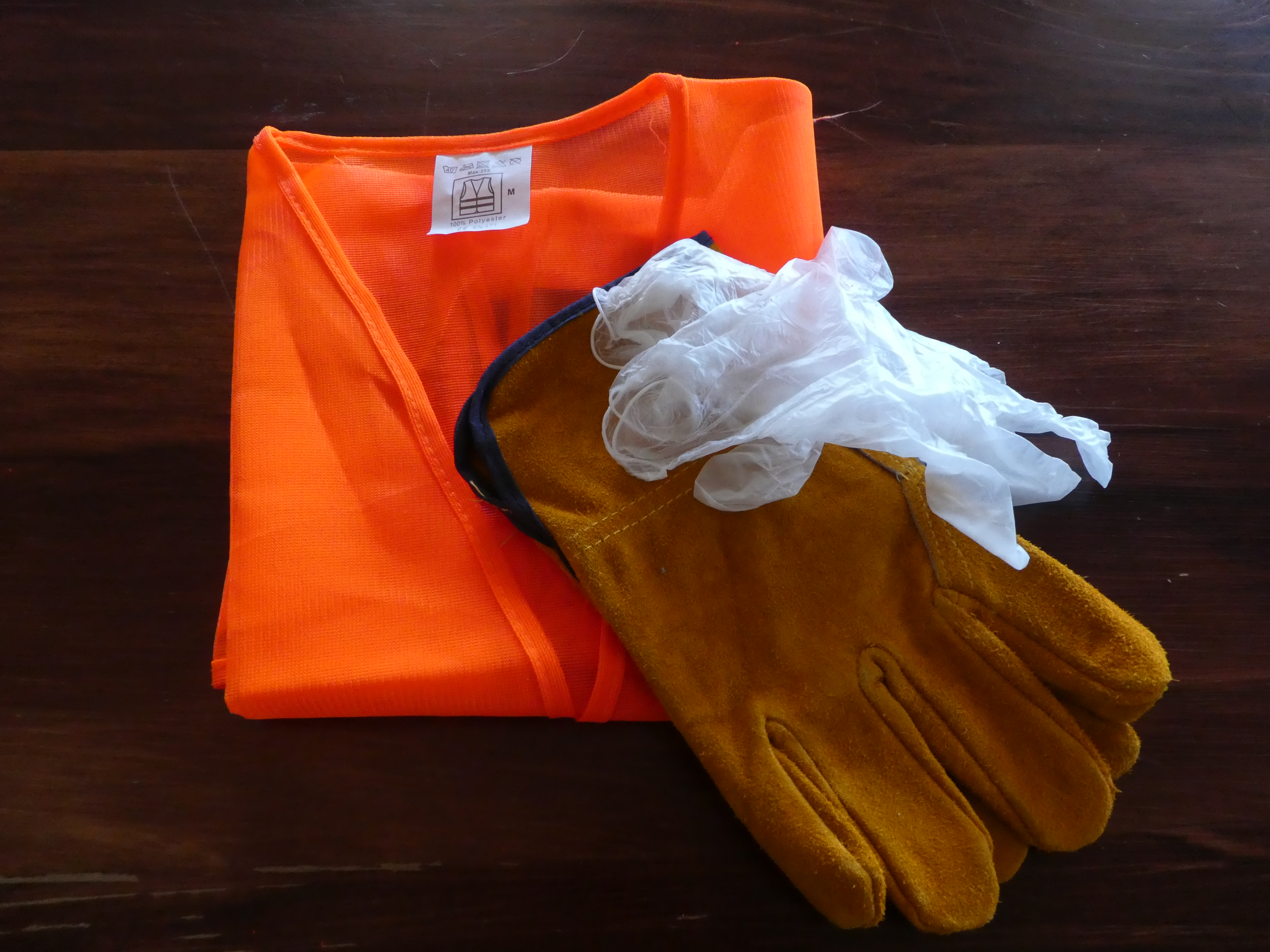Welcome to our new project officer: Jacqui Slingo
Posted on 6 September, 2018 by Frances
It is with great pleasure that Connecting Country announces Jacqui Slingo has joined Connecting Country as a project officer managing our on-ground works program. Welcome Jacqui!
Jacqui is thrilled to be working alongside and supporting a community dedicated to improving and enhancing native vegetation in the Mount Alexander region. She officially started with the team this week after a handover from our botanist Bonnie Humphreys, who is on maternity leave.
Jacqui has previously worked in the Mount Alexander region supporting private land conservation. Her experience includes numerous vegetation and wildlife monitoring projects throughout south-eastern Australia.
Jacqui is excited to return to the region with a view to live here long-term. She enjoys cooking from her garden when she can, yoga and appreciating new places to enjoy in the bush.
Please get in touch with Jacqui if you need advice on managing your property or have any questions about our current on-ground works projects. Jacqui is available from Monday to Thursday and her email address is jacqui@connectingcountry.org.au

Jacqui takes in the Baringhup landscape scenery from a granite rock at the recent Birds on Farms workshop (photo by Frances Howe).
Celebrate Landcare Month!
Posted on 30 August, 2018 by Asha
September 2018 is Landcare Month! With Spring here at last, it’s the perfect time to get outside, get your hands dirty, and connect with other community members. We have 30 groups in the Mount Alexander region alone, so it’s easy to find an event or working bee that’s near you and suits your interests.
Visit http://connectingcountry.org.au/events/ to find Landcare events happening near you in September, or contact asha@connectingcountry.org.au for more information.
Free training for Landcarers and friends
Posted on 28 August, 2018 by Asha
Connecting Country has funding to provide free training to our local Landcare and Friends groups, to arm them with some of the essential skills needed to continue their great work into the future. Priority will be given to current Landcare members. However, you’re also welcome to apply if you are volunteering in the environment space, doing conservation work on your land, or are potentially interested in joining a Landcare group.
The deadline to express your interest is this Friday 31 August 2018. CLICK HERE to download the expression of interest form.
This informative training is tailored to Landcarers needs, and will be presented clearly and concisely by an experienced trainer. Training will cover:
Governance
- How to run an efficient, effective, and fun meeting.
- How to achieve your group’s goals.
- What are you responsible and liable for?
Finance essentials
- How to manage your group’s finances, reports, and budget.
- How to prepare invoices/tax invoices.
- Understanding GST (for groups registered and not registered).
- Using reports for decision-making.
First aid
Option of either:
- Level II First Aid training (#HLTAID003 Provide First Aid).
- CPR refresher course (#HLTAID001 Provide Cardio Pulmonary Resuscitation).
If you have any questions, please email asha@connectingcountry.org.au or call 5472 1594 and ask for Asha.
Telephone troubles
Posted on 28 August, 2018 by Asha
We are having trouble receiving phone calls in the office today, so our apologies if you have been trying to get in touch. Please send us as email if it’s urgent, or try calling again tomorrow. Thanks for your understanding.
FOBIF AGM: Monday 27 August 2018
Posted on 21 August, 2018 by Asha
 Ian Higgins, well known local landcarer and co-founder of Friends of Campbells Creek Landcare, will be the speaker at the upcoming Friends of the Box-Ironbark Forests (FOBIF) AGM on Monday 27 August 2018.
Ian Higgins, well known local landcarer and co-founder of Friends of Campbells Creek Landcare, will be the speaker at the upcoming Friends of the Box-Ironbark Forests (FOBIF) AGM on Monday 27 August 2018.
In an article about Ian after he received the Australian Government Individual Landcarer Award in 2017, the Victorian Landcare Magazine wrote:
Higgins’ early interest in native plants has continued through his life. He developed a remarkable knowledge of indigenous flora species, their propagation and revegetation, leading to a 30-year professional career during which he has contributed significantly to revegetation and environmental planning in Victoria, in both professional and voluntary capacities.
You can find out about Ian’s history of involvement in environmental projects here.
Topics he will cover in his FOBIF speech will include:
- Changes in our landscape and vegetation since colonisation, including the profound local impacts of gold mining and the consequences of a European mindset.
- A short history of rehabilitation efforts, including the contribution of Landcare groups.
- Is aiming for something more like the pre-European condition viable? Given that we’ve already lost many components of the ecosystem, together with massive invasions of exotic species and climate change, what should our local landscape and vegetation management goals be?
The meeting will start at 7.30 pm in the Ray Bradfield Room, Castlemaine VIC (next to Mostyn Street IGA supermarket). Information on how to nominate for the FOBIF Committee can be found here. All welcome and supper will be served.
Monash Uni Students help fight our Cactus War
Posted on 20 August, 2018 by Asha
The Tarrangower Cactus Control Group (aka Cactus Warriors) sent us the following story to share:
Last month a group of students from Monash University spent a few days in Maldon to help us wage the war on Wheel Cactus. This very enthusiastic group of students from Monash University Biological Society travelled here during their midyear holidays, and stayed for four days to inject and dig Wheel Cactus plants. They learnt about the negative impacts and challenges of environmental weeds and we scored some dead Wheel Cactus plants.
The Tarrangower Cactus Control Group sincerely thanks the North Central Catchment Management Authority for funding, and Ian Grenda for hosting and organising this project. The funding provided catering and accommodation for the students, as well as the equipment and herbicide that enabled them to contribute to our battle.
Our next Community Field Day is on Sunday 26 August, starting at 10:30 am. Come and join us for a morning in the fresh air and learn how best to destroy Wheel Cactus. The location this month is in Mount Back Rd, Tarrengower, Victoria. The route will be signposted from Watersons Rd and South Parkins Reef Rd. The morning’s activities end with a delicious BBQ lunch and friendly chat. The event is family friendly but children must be accompanied by a parent at all times. If you have any queries please contact us via our website at www.cactuswarriors.org
Yandoit bird outing – some fine birds
Posted on 13 August, 2018 by Tanya Loos
Landholder John Carruthers recently requested a visit from some experienced birdos to conduct some benchmark bird surveys on his property off Limestone Rd, Yandoit, Victoria. Being a very fine part of the world for birding, this is where we decided to have Connecting Country’s mid-week bird walk.
At 9 am on Wednesday 18 July 2018, our small group met with John at his property. The land is a mix of open country and bush, with Kennedys Gully coursing through open paddocks, and two patches of remnant vegetation with some lovely large old trees. We conducted a 20 minute – 2 ha search, which recorded eight bird species. An area search for the rest of the morning recorded 25 species.
The links to the surveys in Birdata are:
The highlights were a flock of Brown-headed Honeyeaters, a pair of Restless Flycatchers and a pair of Jacky Winters. The Restless Flycatchers and Jacky Winters are birds of open woodlands, so John’s plan to keep some areas open for grazing will be good for these birds.
A lone Yellow-tufted honeyeater was a surprise. Perhaps more of these would be present when the eucalypts are in flower. The Noisy Miners we saw are a concern. Any shrub plantings in the remnants will help discourage these bushland bullies.
While we did not see Brown Treecreepers on the survey, they have been observed at the property previously. The requirements for Brown Treecreepers include lots and lots of fallen timber, so leaving habitat woody debris on the ground will take care of them.
The presence of large old trees on the property, and the extensive native vegetation along Limestone Rd, meant the bird survey recorded a mix of open country and very valuable, threatened Box-Ironbark birds. As a baseline survey, John is starting with the bar set high!
If you already have woodland birds on your property, your restoration plan might include a goal to retain these birds, and provide them with even better habitat by planting shrubs for nesting and food resources.
Thank you, John for showing us your beautiful property, and for your very generous donation to Connecting Country.
A watery Landcare Link-up
Posted on 8 August, 2018 by Asha
It was a dark and stormy night when Landcarers from around the region gathered in Campbells Creek. Our guest speakers included Trent Gibson (North Central Catchment Management Authority), Barry Floyd (Coliban Water), Brett Thompson (Coliban Water) and Mark Bailey (Goulburn Murray Water).
Trent started us off by talking about some of North Central CMA‘s current local projects. You can CLICK HERE to download his full presentation (2 Mb). Among other things, he talked about the new Castlemaine Creekways Management Plan developed by Mount Alexander Shire in partnership with Friends of Campbells Creek and Castlemaine Landcare Group.
Next we heard from Barry and Brent from Coliban Water, each covering different aspects of their work. They encouraged groups to keep an open mind about where partnerships can come from, and to consider the public health benefits of Landcare work and ways to partner with Coliban Water-funded projects.
Mark from Goulburn Murray Water (GMW) finished the event. He explained that GMW covers an area the size of Tasmania, and encouraged groups to have a look at the plans on the GMW website. During question time, Mark also directed us to the interactive map on the Visualising Victoria’s Groundwater website.
One of the big takeaways from the night was that water management is a complex issue, and we merely scraped the surface in this jam-packed evening. All four speakers stressed their support for government-community partnerships, and an interest in working with more Landcare groups. Speakers emphasised that the way our waterways are managed has changed significantly in the last 30 years, and we need to continue to adapt with the changing climate.
Thank you to all of our guest speakers, and to the representatives from eleven Landcare and Friends groups who came along and contributed to the discussion. Thanks also to the volunteers who helped plan and implement the Link-up, included the Landcare Steering Group, and Daryl for picking up our soup!
‘Future-proof your restoration’ seminars
Posted on 7 August, 2018 by Asha
Come along and learn about how we can prepare our environment for a changing climate at two upcoming seminars. This is a chance to hear from experts in the field, share ideas, and browse through useful resources.
We have some truly amazing guest speakers lined up to talk about topics that are relevant to Landcare groups and landholders working to restore their land for the environment.
SEMINAR 1: WEEDS TO WATCH
Guest speakers:
- David Cheal – ‘Weed attack strategies and plans’
- John Morgan (LaTrobe University) – ‘Perennial grass weeds that will threaten nature’
When: Friday 24 August 2018, 5:30 pm – 8:30 pm
Where: Campbells Creek Community Centre, 45 Elizabeth St, Campbells Creek VIC
RSVP: by Monday 20 August for catering purposes to asha@connectingcountry.org.au
SEMINAR 2: PLANTING FOR THE FUTURE
Guest speakers:
- Jeroen VanVeen (Bush Heritage) – ‘Woodland stress: signs of times to come?’
- Sacha Jellinek (Greening Australia) – ‘Developing guidelines for Climate Future Plots in Victoria’
- Brian Bainbridge – ‘Taking actions from modelling to reality’
When: Friday 31 August 2018, 5:30 pm – 8:30 pm
Where: Campbells Creek Community Centre, 45 Elizabeth St, Campbells Creek VIC
RSVP: by Monday 27 August for catering purposes to asha@connectingcountry.org.au
CLICK HERE to download the flier, or contact Asha on (03) 5472 1594 or at asha@connectingcountry.org.au for more information.
This event is funded by the North Central Catchment Management Authority, through the Victorian Landcare Program.
AGM in the bush – Golden Point Landcare
Posted on 2 August, 2018 by Asha
This is how you do an AGM! Join Golden Point Landcare for their hands-on outdoor AGM, and be treated to a gift to take home as well (a free indigenous plant). Everyone is welcome to come for all or part of their AGM this Sunday 5th August, with cutting and painting of gorse at 10am, morning tea in the bush at 11am, and “pick a present” at 11:30am.
Park at the Chapel/Welsh Street corner in Golden Point. BYO secateurs and gloves. Dabbers and herbicide will be provided.
Contact Jennifer on 0423 900 590 to RSVP for catering or for more info. CLICK HERE to download the flier.
Vote for our local Landcarers in the National Landcare Awards
Posted on 2 August, 2018 by Asha
How amazing is this?! We have two local finalists for the National Landcare Awards.
The Tarrangower Cactus Control Group is the Victorian finalist in the National Landcare Community Group Award and Ian Higgins is the Victorian finalist for the Australian Government Individual Landcarer Award.
Please CLICK HERE to go to the link and vote for our locals in the awards to give them the recognition we know they deserve! Voting closes October 10th 2018.
The award will be presented at the National Landcare conference in Brisbane in early October.
Small bush bird habitat created at Bradford!
Posted on 30 July, 2018 by Tanya Loos
What a difference a couple of years makes! Last Thursday, 26 July 2018, Bonnie, Frances and Tanya had the great pleasure of visiting Kerri Peacoulakis’ property in Bradford to marvel at the growth of native plant species at their direct seeding site, and also chat about bird surveying. Below is a photo of part of the site taken in September 2016, about one year after direct seeding.
Below is the same site, taken in the same direction. Note the large eucalypt with the wide crown in the left hand side of the photo.
The site was direct seeded in 2015, as part of Connecting Country’s Habitat for Bush Birds project. It is amazing to think that there are many tiny young plants fighting for survival under all the prolific capeweed in the first photo! The site is a bird survey site called NW-PR-03, a northwest paddock revegetation site. The direct seeding is even more successful looking in the other direction, towards the Blue Hills area.
In the above photo, Bonnie is using a trundle wheel and a counter to carry out a direct seeding success count. These counts measure how many plants have grown, giving a standard measure of trees/shrubs per metre count. This number is comparable from site to site, and enables us here at Connecting Country to monitor the growth of our direct seeding from year to year.
The plant species in the direct seeding included a mix of local wattles, eucalypts, she-oaks, hop bush, and hakeas.
Kerri is taking on the bird survey site, by surveying the site four times per year. During our visit, we conducted a 20 minute 2 hectare count, with Kerri entering the data on her Birdata app on her smartphone. So simple! During the survey, we saw many open country species such as Red-rumped parrots, Welcome swallows and Australian magpies. Kerri said that she had observed Superb fairy-wrens on the site – a true mark of success as these little birds are NEVER recorded in a bare, open paddock! Well done Kerri and also her partner Tusker and family for a fantastic project!
Come planting with Friends of Campbells Creek Landcare – National Tree Day
Posted on 26 July, 2018 by Asha
Each year Friends of Campbells Creek takes part in two important Australia-wide events. One is Clean up Australia Day, held earlier in the year. The other is National Tree Day, which will be held next Sunday (29 July 2018). National Tree Day brings communities together to re-establish native vegetation all across the nation.
The Friends will be planting at two sites along the creek, possibly three if we have enough people attending. There will be a free BBQ lunch afterwards. The group would love to see you there!
Details are as follows:
The plan: We’ll be planting trees, shrubs and robust herbs like Lomandras to accentuate one of the main entrances to the Campbells Creek trail.
When: Meet at 10:00 am on Sunday 29 July at the outdoor environment classroom (the colourful tables and benches). We’ll finish around mid-day with a BBQ.
Get there: Park outside the Campbells Creek Park in Main Road, Campbells Creek, opposite the hardware store. Follow the winding concrete path westwards towards the creek and then walk upstream along the creek track, crossing the footbridge and continuing for another 70 metres. OR: Park in Elizabeth Street 40 metres north of Cemetery Road and walk 150 metres east along the feeder track (you can drive in but there’s limited parking space in the reserve).
Bring: Hats, gloves, sturdy clothing, enclosed footwear, protection suitable for the weather, and your own water. With rain forecast in the preceding week, gumboots might be useful.
For more information, get in touch Friends of Campbells Creek Landcare
Contact: Thea King
Tel: 0421 656 643
Email: info@focc.org.au
Website: https://www.landcarevic.org.au/groups/northcentral/focg/
Nest box adventures: a community effort in 2018
Posted on 19 July, 2018 by Asha
In May 2018, Connecting Country once again completed monitoring of our nest boxes. This was the fourth time we’ve checked the boxes since they were installed the Mount Alexander region in 2010/11. This year, we were lucky enough to have help from Beth Mellick from the Wettenhall Environment Trust and Jess Lawton from Latrobe University.
Beth, Jess, and Asha tag-teamed going out with many fabulous volunteers to check the 300 nest boxes that are part of CC’s official monitoring program. For each box, we recorded information about which species were using it, either by identifying a living animal or by looking at the nest in the box.
The boxes were installed to provide crucial habitat for Brush-tailed Phascogales, but they also attract other animals like Sugar Gliders and invasive Honeybees. We also collected data to update our existing information on the box’s context in the environment (tree size, tree species, patch size, etc.). We are working on inputting all of this data into our database for analysis so we can compile a report with some results to share.
Thank you to all of the amazing people who volunteered their time to help this year: Jeremy, Lori, Naomi, Bev, Paul, Gayle, Carmen, Mal, Damian, Frances, Lachlan, and Meg. A big thank you also to the hundred or so landholders who continue to host our nest boxes on their property, and allow us access for monitoring.
Special thanks go to Beth, Jess, the Wettenhall Environment Trust, and Latrobe University for their support and for making this year’s nest box monitoring possible.
For more information about Connecting Country’s nest boxes and past monitoring, CLICK HERE.
It’s planting season! Understorey enhancement underway…
Posted on 17 July, 2018 by Tanya Loos
It is the height of winter, and the peak planting season is drawing to a close. We’re very happy to be distributing plants to landholders participating in our on-ground works projects. The plants pictured below are a range of native understorey plants that will add diversity and habitat quality to existing remnant vegetation.
Landholders involved in our ‘Prickly Plants for Wildlife’ project are planting their own plants. Landholders from our ‘Woodland Bird Habitat’, ‘Remnant Rescue’ or ‘Biodiversity On-ground Action’ projects are receiving assistance from the Dja Dja Wurrung works crew, known as Djandak. These projects are made possible by funding from the Victorian Department of Environment, Land, Water and Planning, and the North Central Catchment Management Authority.
Young plants need protection while they get established. Previously we used milk carton guards and bamboo stakes in our planting programs. Now we use coreflute guards and hardwood stakes, as these provide more protection against grazing wallabies, and are less likely to get knocked over by commuting kangaroos.

The Little Habitat Heroes planting site on Mount Alexander, by the old silkworm farm. Coreflute guards and stakes have worked very well on this site, resulting in high rates of plant survival.
Connecting Country is always looking for landholders interested in protecting native vegetation and wildlife habitat on their properties. Check out the on-ground works section of our website for more information, and to download an Expression of Interest form.
Bird and Frog App workshop – Sunday 15 July 2018
Posted on 12 July, 2018 by Asha
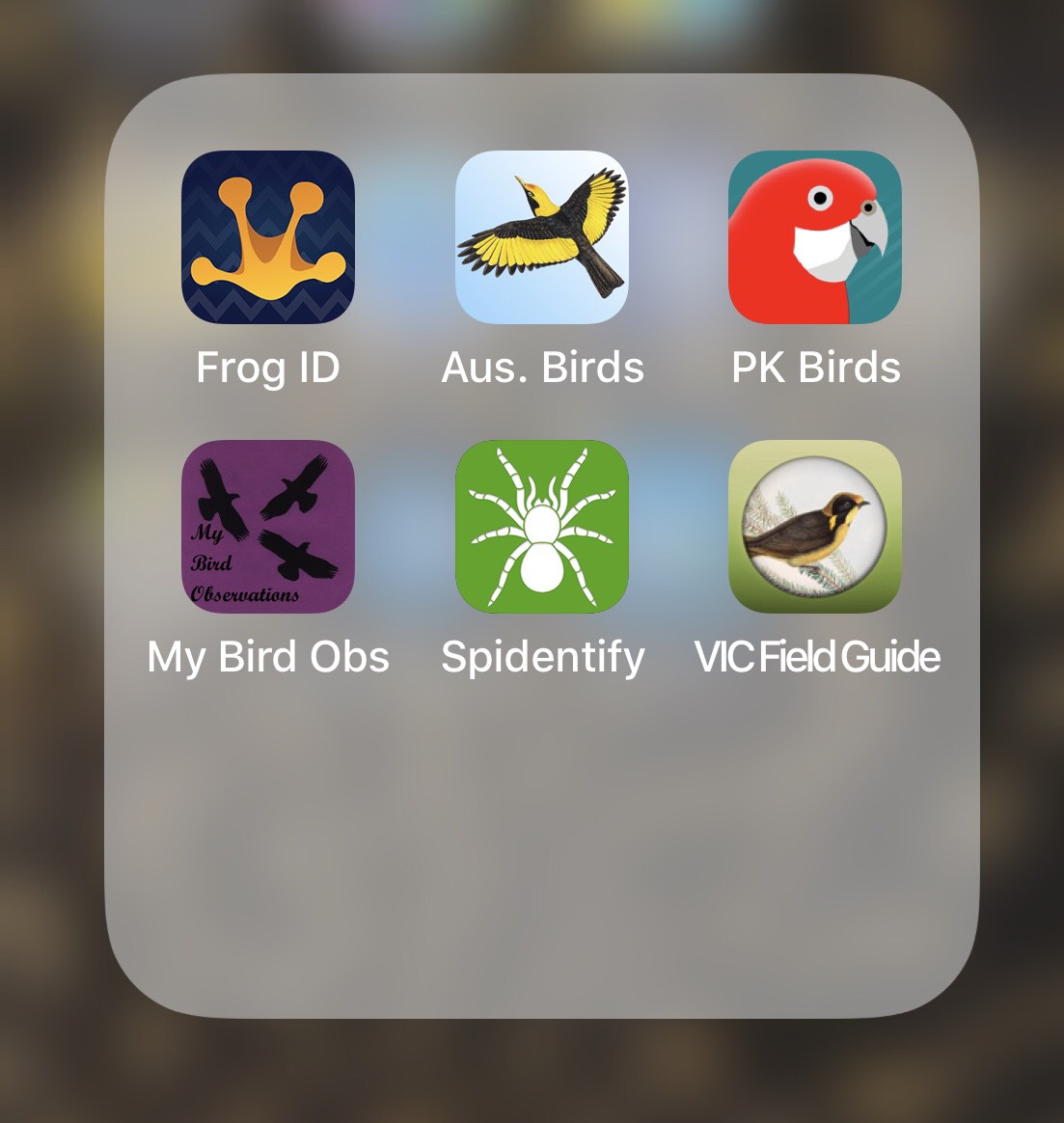 Muckleford Landcare’s Bird and Frog App Workshop is this Sunday 15 July 2018, at 1.30 pm, in Maldon.
Muckleford Landcare’s Bird and Frog App Workshop is this Sunday 15 July 2018, at 1.30 pm, in Maldon.
You will need to come along with a smart device or tablet with the following apps downloaded: Birdata and Frog ID. Another good app is the Vic Field Guide from Museum Victoria. The workshop will cover how to use the apps and how to upload data to national databases.
All are welcome. You can RSVP by emailing Beth Mellick (Muckleford Landcare Secretary) at bethmellick@gmail.com, or sending a text to 0431219980 and they’ll send you the address.
BirdLife Castlemaine District launch and Swift Parrot conservation
Posted on 10 July, 2018 by Tanya Loos
Many excited faces gathered at the Castlemaine Botanic Gardens Tearooms on Saturday 7 July 2018, as we celebrated the launch of BirdLife Australia’s newest branch – BirdLife Castlemaine and District. The launch also incorporated an ‘Act for Birds’ Roadshow – a community forum on how we can encourage stronger environmental laws to help safeguard threatened species such as the Swift Parrot.
We began the afternoon with a Welcome to Country from Uncle Rick and Kane, and Uncle Rick talked about the significance of birds to the Dja Dja Wurrung. Fiona Blandford (Branch Network manager) and Jane Rusden (BirdLife District Convenor) formally launched the new branch, with a lovely nod to Connecting Country and our work to build community interest in birds on our region.
Brendan Sydes (Connecting Country president), in his role as lawyer and CEO of Environmental Justice Australia, gave a rousing introduction to the potential for positive change to environmental laws in this country.
Beth Mellick (of Wettenhall Environment Trust) is the regional coordinator for the local Swift Parrot counts done twice a year. Beth gave a wonderful talk on our local swifties and the power of citizen scientists, including showing an excerpt from Debbie Worland’s DVD, the Swift Parrots of Muckleford in Central Victoria. The DVD shows never-seen footage of Swift Parrots filmed entirely in Muckleford over a five-year period by Debbie Worland, a member of the Castlemaine Field Naturalists Club. For infomation about the DVD, email swiftparrotsofmuckleford@hotmail.com. If you would like to be involved in the Swift Parrot count later this year, email Beth at beth@wettenhall.org.au.
We then heard from our main speaker – Kim Garrett (Conservation Community Organiser for BirdLife Australia). Kim spoke passionately and eloquently on how our current laws are failing threatened species in Australia, and what we as community members can do about it. Many policy and environmental law experts have prepared a detailed case for how environmental laws could be strengthened in our country, and the Act for Birds campaign summarises the case succinctly.
In a nutshell, the campaign calls for us to:
- Create national environment laws that genuinely protect our unique birdlife.
- Establish independent institutions that set national environmental standards, and operate transparently and independently of government.
- Guarantee community rights and participation in environmental decision-making.
To get involved, head on over to www.actforbirds.org to sign the petition and get some tips on engaging with your local member.
The Swift Parrot is Critically Endangered and numbers are still declining due to serious loopholes in current environmental laws. The current laws are up for a twenty year review, so now is an ideal time to act.
Please enjoy this gallery of photos of some of the attendees. Many thanks to the staff from BirdLife for travelling to Castlemaine to share in the excitement, to the committee and volunteers of BirdLife District Castlemaine for planning and logistics, Uncle Rick and Kane, the presenters, and to Jane Rusden for pulling the whole event together!
The contact email for the new branch is castlemaine@birdlife.org.au and our new Facebook page is BirdLife-Castlemaine-District
For a great overview of the Swift Parrot and the ‘Act for Birds’ campaign, see this article in the Bendigo Advertisor: renewed-focus-to-save-castlemaines-migratory-parrots/
National Tree Day – 29 July 2018
Posted on 28 June, 2018 by Frances
About National Tree Day
National Tree Day is Australia’s largest tree-planting and nature care event. Tree Day is an opportunity to do something positive for your local environment and community, and reconnect with nature. National Tree Day started in 1996 and since then more than 4 million people have planted over 24 million trees and plants and it’s still growing.
National Tree Day aims to inspire, educate and recruit Australians to actively care for our unique land and create future generations of committed environmental custodians.
When is National Tree Day?
Traditionally it is always held in the last weekend in July, as this is the most appropriate day for the majority of regions. The dates for 2018 are:
- Schools Tree Day – Friday 27 July 2018
- National Tree Day – Sunday 29 July 2018
However, if these dates don’t suit, any day can be Tree Day.
So start planning a National Tree Day event, or look out for activities happening in your local area.
For further information about National Tree Day see Planet Ark’s website – click here
BirdLife Celebration and Roadshow – 7 July 2018
Posted on 28 June, 2018 by Frances
BirdLife is coming to town, so put 12:30 – 3:00 pm on Saturday 7 July in your diaries folks. Join us at the Tearoom in Castlemaine Botanic Gardens (2 Walker Street, Castlemaine VIC). There will be celebrations, information on how we, the grassroots, can really make a difference, and an art activity for the kids.
BirdLife is bring its ‘Act for Birds’ Roadshow to Castlemaine, with plenty of ideas on how you and I can make a real difference for the natural environment.
The stunning Swift Parrot needs our help to save it from extinction. (Photo by Chris Tzaros)
Drum roll please …… We have a new group in the area: Castlemaine District BirdLife Branch, for all bird enthusiasts and aspiring bird enthusiasts, as well as those who are just curious or like birds a little bit. On offer will be monthly bird outings, some talks and a chance to meet like-minded people, across all age groups. Come along, find out more and meet some of us.
Jane Rusden, Convener Castlemaine District BirdLife Group
Wildlife Rescue Kits
Posted on 27 June, 2018 by Frances
Connecting Country has put together some Wildlife Rescue Kits to keep in our vehicles, for use should we encounter an injured animal.
It was fun gathering up all the bits and pieces. Many we found at the op-shop or around the office, some we had to purchase.
 The op shop had some beanies, old towels, pillow cases, sheets and blankets. These are all useful to cover a small creature to help it to be calm. Sheets may be needed for larger mammals.
The op shop had some beanies, old towels, pillow cases, sheets and blankets. These are all useful to cover a small creature to help it to be calm. Sheets may be needed for larger mammals.
The storage box with newspaper and a sturdy stick on the bottom doubles as a safe place to secure an injured bird.
Before attempting to rescue an injured animal, it’s essential to think about your own safety. We put in some safety equipment, including a fluoro vest, sturdy gloves, disposable gloves and hand sanitiser. There’s a water bottle and cotton cloth to clean up and wash hands with afterwards.
Some useful things we included:
- A
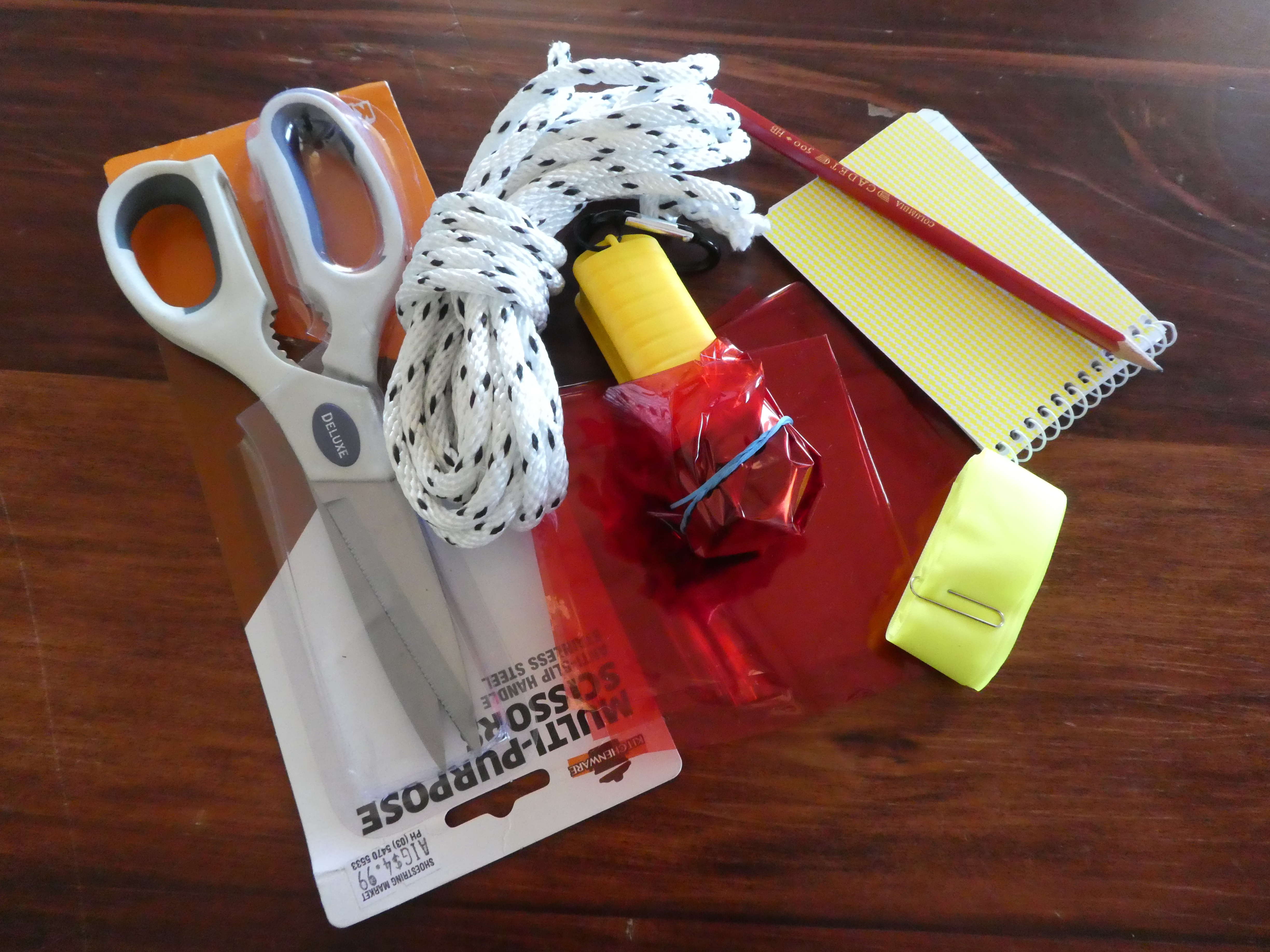 list of numbers to call and things to consider before handling injured wildlife (for our list see wildlife-rescue-numbers-to-call)
list of numbers to call and things to consider before handling injured wildlife (for our list see wildlife-rescue-numbers-to-call) - Flagging tape for tying to a tree to mark the location in case you can’t stay
- Soft rope or string
- Newspaper
- Sharp kitchen scissors
- Pad and paper
- Torch and red cellophane
Other items that could be included:
- Hot water bottle or heat pack
- Small inexpensive binoculars
- Pliers
We packed it all in a pillow case which fitted well inside an empty office paper box.
Many thanks to Margaret for putting together our kits. If you regularly drive on country roads, you might consider making your own kit. Please take all rescued wildlife to a vet or registered wildlife carer as quickly as possible.




